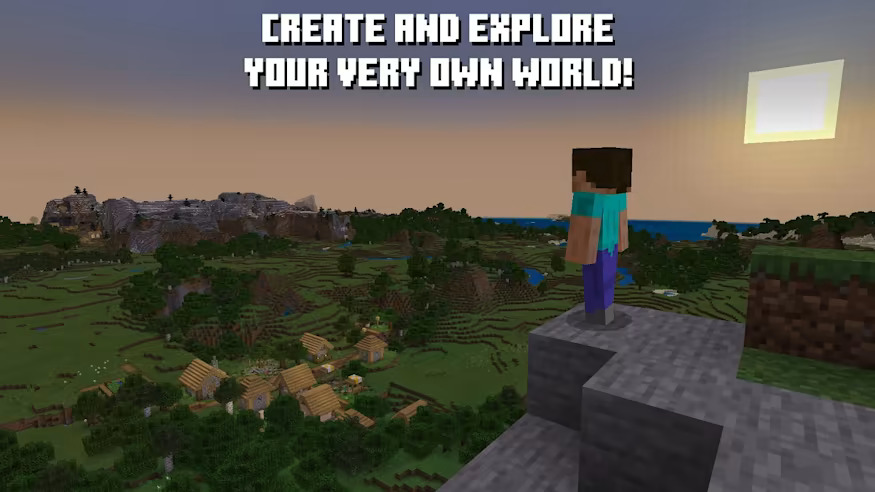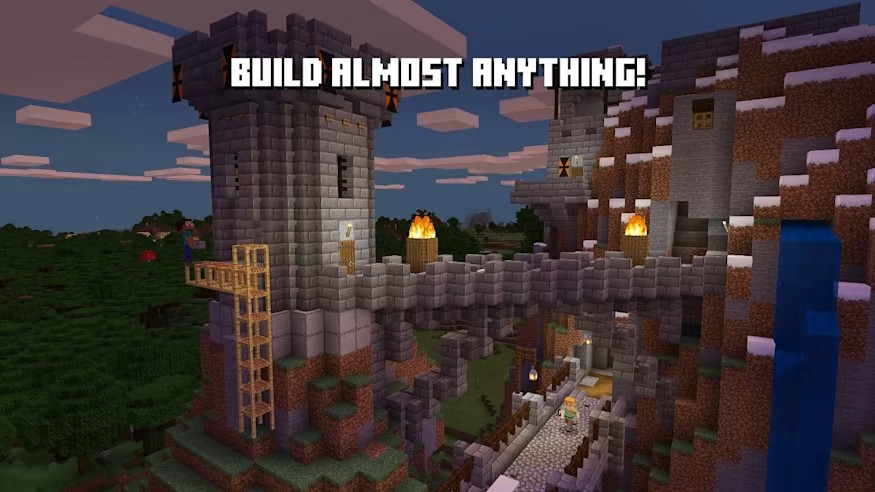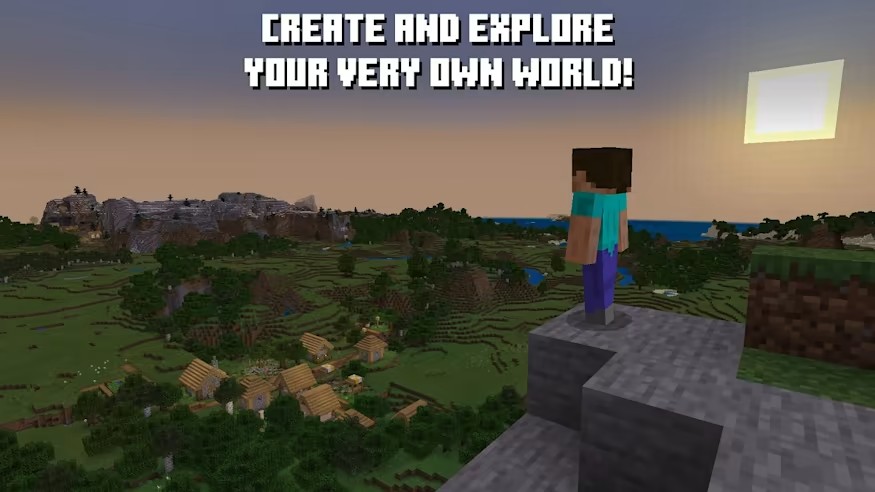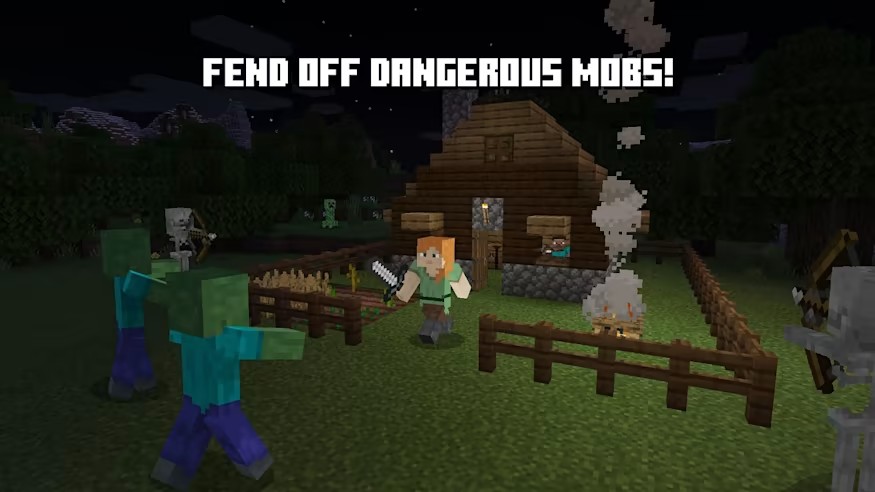Minecraft is a sandbox game that features a vast and diverse world filled with unique biomes. Biomes are distinct regions with their own climate, terrain, vegetation, and wildlife, offering players a wide range of environments to explore and interact with. In this guide, we will delve into some of the most notable biomes in Minecraft, providing descriptions and detailed explanations of their key features.
Forest Biomes
Forest biomes are lush, green environments abundant in trees, vegetation, and wildlife. They provide players with ample opportunities for resource gathering, building, and exploration. Here are some notable forest biomes in Minecraft:
- Oak Forest:
- Oak Forests are characterized by tall oak trees and a dense canopy that blocks out a significant amount of sunlight. The forest floor is covered in grass, ferns, and flowers, creating a vibrant and colorful environment.
- Players can find oak logs, saplings, and apples in this biome. It’s also home to various animals like cows, pigs, and chickens.
- Birch Forest:
- Birch Forests feature beautiful white birch trees that contrast with the green grass and foliage. These biomes often have hilly terrain, making them visually appealing.
- Birch trees provide birch logs and saplings, which can be used for building or crafting. Players may also encounter rabbits and wolves in this biome.
- Dark Forest:
- Dark Forests, also known as Roofed Forests, are characterized by a thick canopy of dark oak trees that casts a shadow over the forest floor. The dense vegetation and lack of sunlight create an eerie atmosphere.
- Players can find dark oak logs, mushrooms, and rare flowers in this biome. It’s also a spawning ground for hostile mobs like skeletons and zombies.
- Jungle:
- Jungles are lush, tropical biomes with tall jungle trees, dense foliage, and vibrant plants. Vines hang from the trees, and large ferns cover the ground, giving the biome a wild and exotic feel.
- Players can find jungle logs, cocoa beans, and melons in this biome. Jungles are also home to ocelots, parrots, and pandas, making them a unique and lively environment.
These forest biomes offer rich and diverse environments, each with its own resources and atmosphere. Exploring these biomes can be rewarding and provide players with essential materials for their Minecraft adventures.

Desert Biomes
Desert biomes are arid and barren regions characterized by vast stretches of sand and scarce vegetation. They present their own set of challenges, including limited resources and extreme temperatures. Here are some notable desert biomes in Minecraft:
- Desert:
- Deserts are flat, sandy biomes with little to no vegetation. Cacti and dead bushes are the primary sources of plant life in this biome, providing essential resources for survival.
- Players can find sand, sandstone, and cacti in deserts. Desert temples and wells occasionally generate in this biome, offering valuable loot for explorers.
- Badlands:
- Badlands, also known as Mesa biomes, are characterized by their unique and colorful clay formations. The vibrant orange, red, and yellow cliffs and plateaus create a visually striking landscape.
- Players can find different variants of terracotta, red sand, and gold ore in Badlands. Mineshafts can generate within the mesa biome, providing additional opportunities for resource gathering.
- Desert Hills:
- Desert Hills are similar to regular deserts but with more varied terrain. They feature sandy hills and occasional exposed stone formations, adding visual interest to the biome.
- Players can find the same resources as in regular deserts in this biome. Desert wells and villages sometimes generate in desert hills, offering additional points of interest.
- Savanna:
- Savannas are dry grassland biomes dotted with acacia trees. They feature tall grass, occasional small hills, and patches of dead bushes. The golden grass and acacia trees give the biome a warm and savannah-like appearance.
- Players can find acacia logs, saplings, and tall grass in savannas. The biome is also home to various animals such as zebras and giraffes, adding to its unique charm.
These desert biomes, although harsh and challenging, offer their own rewards. From the unique terrain formations of Badlands to the exotic acacia trees of the Savanna, players can find a variety of resources and discover stunning landscapes in these biomes.

Snowy Biomes
Snowy biomes are cold and icy regions characterized by frozen landscapes and snow-covered terrain. They offer a different set of challenges and resources compared to other biomes. Here are some notable snowy biomes in Minecraft:
- Snowy Tundra:
- Snowy Tundras are vast, flat biomes covered in snow and ice. They lack trees and vegetation, giving them a desolate and cold appearance. The terrain is mostly flat, with occasional hills and frozen lakes.
- Players can find snow blocks, ice blocks, and packed ice in Snowy Tundras. Polar bears and rabbits are the main wildlife found in this biome.
- Snowy Taiga:
- Snowy Taigas are similar to regular Taigas but with a snowy landscape. They feature tall spruce trees covered in snow, creating a picturesque winter scene. The ground is covered in snow and mossy patches.
- Players can find spruce logs, saplings, and berries in Snowy Taigas. Wolves, foxes, and snow golems can also be found in this biome.
- Ice Spikes Biome:
- Ice Spikes Biomes are rare and visually stunning. They consist of towering ice spikes that reach into the sky, creating a unique and otherworldly landscape. The ground is covered in packed ice and snow.
- Players can gather packed ice blocks from this biome. Polar bears and stray cats occasionally spawn here, adding to the icy atmosphere.
- Frozen Ocean:
- Frozen Oceans are vast bodies of frozen water, extending as far as the eye can see. They are devoid of landmasses and covered in a thick layer of ice, making them treacherous to navigate.
- Players can find packed ice, icebergs, and occasional underwater ruins in Frozen Oceans. Polar bears and dolphins can also be found swimming in the icy waters.
Snowy biomes offer a unique and challenging experience in Minecraft. From the desolate Snowy Tundra to the majestic Ice Spikes Biome, players can embrace the winter atmosphere and discover valuable resources in these frozen landscapes.

Oceanic Biomes
Oceanic biomes in Minecraft are expansive bodies of water that cover a significant portion of the game world. These biomes offer diverse underwater ecosystems and provide players with opportunities for exploration, fishing, and underwater construction. Here are some notable oceanic biomes:
- Ocean:
- Oceans are vast, deep bodies of water that stretch across the Minecraft world. They have no landmasses and are teeming with marine life, including fish, squid, and dolphins. Coral reefs can also generate in oceans, providing a colorful and vibrant underwater environment.
- Players can explore the depths of the ocean, gather fish and squid for food, and even discover shipwrecks and buried treasure in this biome.
- Deep Ocean:
- Deep Oceans are similar to regular oceans but with greater depths. They feature steep underwater cliffs, trenches, and ravines, creating a more challenging and mysterious underwater environment.
- Players can encounter a variety of marine life, including guardians and elder guardians, in Deep Oceans. They can also find underwater ravines and ocean monuments, which contain valuable loot and challenges.
- Warm Ocean:
- Warm Oceans are oceanic biomes with warm water temperatures and vibrant coral reefs. They feature a rich diversity of marine life, including tropical fish, dolphins, and turtles. The coral reefs are home to colorful coral blocks and sea pickles.
- Players can go snorkeling or diving in Warm Oceans, exploring the coral reefs and encountering various underwater creatures. They can also collect coral blocks and sea pickles for decorative purposes.
- Frozen Ocean:
- Frozen Oceans, as the name suggests, are oceanic biomes covered in ice and snow. They are cold and unforgiving, with frozen water that can be treacherous to traverse. Polar bears may occasionally spawn on the ice.
- Players can venture into the Frozen Ocean to gather packed ice and explore icebergs. However, they must exercise caution to avoid falling into the freezing water or encountering hostile mobs.
Oceanic biomes provide players with a vast and unexplored world beneath the surface. From the vibrant coral reefs of Warm Oceans to the mysterious depths of Deep Oceans, these biomes offer endless opportunities for underwater adventures.

Other Notable Biomes
While the aforementioned biomes are some of the most prominent in Minecraft, there are several other noteworthy biomes worth exploring. These biomes offer unique features and resources that add depth and variety to the game. Here are a few examples:
- Mushroom Island:
- Mushroom Islands are rare and unique biomes covered in mycelium and giant mushrooms. They have a surreal and peaceful atmosphere, devoid of hostile mobs. The giant mushrooms provide mushroom blocks and can be used for various crafting purposes.
- Players can explore Mushroom Islands, gather mushrooms, and create mushroom-themed structures in this tranquil biome.
- Swamp:
- Swamps are damp and murky biomes characterized by shallow bodies of water, tall grass, and trees covered in vines. They have a distinct green tint and often generate with witch huts, which can contain valuable loot.
- Players can find unique flora in Swamps, such as lily pads and swamp reeds. Slimes can also spawn at night, making Swamps a good location for slime farming.
- Jungle:
- Jungles are dense and vibrant biomes filled with tall jungle trees, lush vegetation, and exotic wildlife. They have a tropical and humid atmosphere, and vines hang from the trees. Jungle temples can occasionally be found, offering hidden treasures.
- Players can gather jungle wood, cocoa beans, and melons in Jungles. Parrots, ocelots, and pandas can also be found, adding life and diversity to this biome.
- Savanna:
- Savannas are expansive and dry biomes characterized by vast grasslands, scattered acacia trees, and occasional termite mounds. They have a warm and arid climate, with little rainfall. Villages in Savannas have a unique design with acacia wood and terracotta structures.
- Players can find acacia logs, terracotta, and various savanna-exclusive mobs like giraffes and zebras in this biome.
- Badlands (Mesa):
- Badlands, also known as Mesas, are awe-inspiring biomes with unique land formations and colorful clay and terracotta structures. They feature towering plateaus, deep canyons, and exposed mineral veins. Gold can be found more easily in these biomes.
- Players can gather clay, terracotta, and stained clay in Badlands. They can also mine gold and encounter wandering traders with llamas.
Each of these biomes offers distinct visuals, resources, and challenges, encouraging players to explore and discover new environments in Minecraft. Whether it’s the tranquil Mushroom Island, the dense and vibrant Jungle, or the awe-inspiring Badlands, there’s always something exciting to uncover in the vast world of Minecraft.
